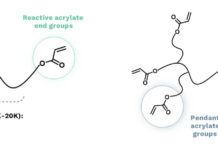By Nancy Cates, contributing writer, UV+EB Technology
Positioning Canada as a global leader in green interior wood finishing and densification is the goal of a new, five-year research infrastructure at Université Laval in Quebec City. Using innovative practices to significantly impact the use of next-generation interior wood products, researchers hope to decrease greenhouse gas emissions and increase consumer comfort and health.
The new infrastructure is in the form of a Natural Sciences and Engineering Research Council of Canada (NSERC) Industrial Research Chair and a cooperative research and development project (CRD). It will solidify a partnership made up of five companies oriented toward research and development: Canlak, Boa-Franc, Inortech Chimie, Portes Lambton and Canadel. The partnership includes the entire value chain for finishing interior wood products.
The most recent efforts to reduce greenhouse gases suggest increased reliance on wood because it is the only renewable construction material and has the smallest environmental impact.
“More widespread use of products that look like wood is an opportunity to increase the amount of wood in buildings, which will help reduce greenhouse gas emissions,” said Véronic Landry, holder of the new chair and professor in Université Laval’s Wood and Forest Sciences Department. “As a carbon negative material, wood is a first-class material for environmentally friendly buildings, as its use contributes to the reduction of buildings’ greenhouse gas emissions. Indeed, as the tree grows, CO2 from the atmosphere is absorbed and stored in wood while releasing O2. Thus, the production of wood sequesters CO2 and avoids greenhouse emissions. Moreover, the manufacture of wood requires less energy than that of some other building materials.”
Beyond being eco-friendly, she explained that wood is widely appreciated for its decorative and comfort attributes. “The use of wood as a building component increases well-being, thanks to its warmth and charm.”
The research program is divided into three parts: densifying, decorating and protecting. The first part deals with the densification of wood, while the other two are concerned with surface coatings. To ensure the results address industrial needs, the Chair will use a “value chain” approach that reflects the industrial partnership. The research will focus on polymer chemical densification systems, chemical densification processes, chemical coloring, strategies for improving finished wood, and mechanical performance and fire resistance of surface coverings.
“One of the main focuses of the Chair is to provide high quality, innovative and environmentally friendly wood finishing products,” Landry said. “Reducing the use of solvents – and therefore the production of volatile organic compounds (VOC) – in finishing is fundamental toward greener products. The use of UV technology is key to bring low-VOC products to the market. Indeed, solvents are usually used to reduce viscosity of conventional finishes, while reactive thinners like monomers are used for UV products, thus reducing VOC emissions.
“UV technology is crucial to our products,” she continued, “especially in the field of pre-finished engineered wood flooring and doors. The UV technology brings advantages such as greater energy of photons, temporal control of the reaction and thus increased pot-life of products, along with the ability to react at ambient temperature.”
The Chair is the result of close collaboration between the Faculty of Forestry, Geography and Geomatics (FFGG) and the Faculty of Sciences and Engineering (FSE). At the confluence of materials chemistry and wood science, the Chair will help Université Laval train highly qualified specialists in the finishing and densification of interior wood products.
“The Chair was initiated through the NSERC Industrial Research Chair program that aims to increase collaboration between Canadian universities and private companies, as well as provide enhanced training to graduate students,” Landry said. “Our research lines are based on problematics that our partners are facing. We work closely with them as we share advancement of projects, and they provide extensive technical, material and financial support. Their willingness to welcome our students within their manufacturing and research and development sites through tours and internships is key to the active learning of our graduates. Their help is fundamental for us in order to maintain industrial-driven research.”
At the launch of the Chair, partners said they were pleased with the new research infrastructure that will contribute to technology development and innovation, two keys to growing their companies and the Canadian economy. In addition, no other Canadian university program provides training for specialists in the field.
The NSERC-Canlak Industrial Research Chair in Interior Wood Product Finishing and the CRD project were made possible by a five-year, $3.7 million investment by NSERC, $2.2 million of which was contributed by industrial partners. Université de Haute- Alsace, based in Mulhouse, France; Bern University of Applied Science, Bern, Switzerland; and Université de Lille, Lille, France, will collaborate on the research.
The research will focus on polymer chemical densification systems, chemical densification processes, chemical coloring, strategies for improving finished wood, and mechanical performance and fire resistance of surface coverings.
The Université Laval project has been chosen as a member of the 2019 RadLaunch Class and will be presented at the BIG IDEAS Conference in March.






